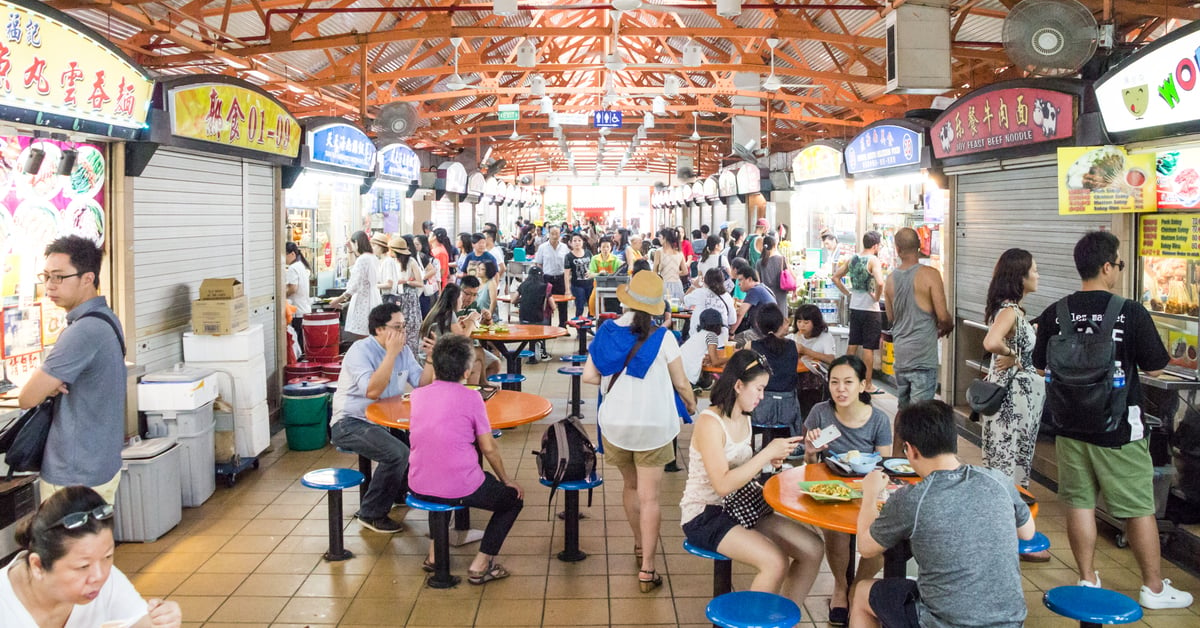s
SFA Intensifies Inspections as Over 1,000 Food Vendors Caught Without Masks
According to 8World, nearly 1,000 local food and beverage operators were penalised for not wearing masks or face shields in 2023.
What? Still need to wear masks to cook today?
Yes, as with the usual protective measures Singapore sets to protect its residents, our hawker centre aunties and uncles still have to observe the rules set by the Singapore Food Authority (SFA).
Current Enforcements for F&B Outlets
SFA has heightened surveillance in eateries, enforcing mask regulations that have been a staple since the outbreak of the pandemic.
The SFA mandates that, as part of licensing requirements for food establishments, food handlers must wear a mask or spit guard. This measure is critical to prevent the contamination of food from coughs or sneezes during its preparation and handling.
Notably, in certain areas designated as “mask-on zones” under the COVID-19 (Temporary Measures) (Reopening — Control Order) (Amendment No. 6) Regulations 2022, food handlers must wear masks exclusively and cannot opt for spit guards.
This is particularly true for F&B outlets located in healthcare institutions such as hospitals and polyclinics.
From the initial preparation of ingredients to the final packing and dishing of food, the requirement to wear masks or spit guards extends to all stages, including when handling ready-to-eat items.
The Challenge of Compliance
Adhering to this rule has been nothing but challenging.
Wearing masks in the sweltering heat can be uncomfortable, leading to a build-up of sweat — which, without frequent mask changes, can itself become a hygiene issue for hawkers.
According to 8World, some stallholders at the Toa Payoh night market have admitted to removing their masks during the hotter parts of the day, although the majority maintain mask-wearing while serving customers.
s
One stallholder remarked, “You have to endure it, it’s better. Firstly for hygiene, secondly to keep clean, the customers are more satisfied.”
Another shared the difficulty of grilling meat at 350 degrees: “The mask gets soaked, and sweat keeps dripping.”
At a food centre in Bishan, the majority of stallholders adhere to the mask-wearing policy.
Following the government’s move to lift pandemic-related mask measures last August, food and beverage industry personnel engaged in food handling must persist in wearing masks.
Non-retail food establishments, including food manufacturers, central kitchens, and slaughterhouses, are also required to abide by these safety measures, ensuring minimal potential contamination throughout the food production chain.
The Impact of Penalties on Livelihoods
In response to queries from 8World, the Food Authority highlighted that, although most operators abide by the rules during inspections, enforcement officers have acted against about 1,000 violators since last August.
The SFA has committed to more frequent surprise inspections, with violators potentially facing fines, imprisonment, or both. Repeat offenders risk enforcement fines up to $10,000, imprisonment for up to twelve months, or both. Additionally, persistent breaches could lead to suspension or cancellation of licenses.
Continued Emphasis on Health and Safety
Liu Fuki, chairman of the Hawkers Department at the National Federation of Merchants, observed that stallholders have grown accustomed to conducting business while masked, recognizing the practice’s role in promoting food hygiene and safety, beyond just epidemic prevention.
“Sometimes when handling food, we might accidentally spit or sneeze, which can lead to the food becoming unhygienic. So, wearing a mask is not only necessary during an epidemic,” Liu stated.
Upon visiting several coffee shops and food centres, reporters from 8World found that approximately ten percent of the stallholders were without masks.
s
The majority, however, expressed a commitment to wearing masks despite the discomfort, prioritising the safety of their customers and the food they serve.

